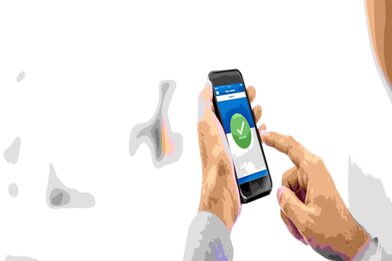Gamification has been the subject of research and on Gartner’s radar for emerging technologies for over a decade. Given the hype and the studies performed, there are many measures of the effects of gamification and measures to magnify these effects. For starters, Yi and Jeon showed how rewards are linked to brand loyalty and perceived value. Building upon this research, Hwang and Choi studied how gamification affected the outcome of loyalty programs.
While these studies are more oriented towards larger perspectives of brand and value, there is a multitude of business cases where enterprises can gamify effectively and reap the rewards.
Before we dive right into the impact of gamification, let’s get a few definitions in order:
- Change: it is the business goal of gamification – whether it is a new technology, new process, product, facility, or a feature, Change defines what is different today from what it was yesterday.
- Target Audience: The people affected by the Change, whose work will be influenced by the change, or people who may help in advancing the objectives of the change – be change champions or internal influencers.
- Outcome: Well, what we see after the implementation of Change, and of course, the gamification of this change.
Adoption
Whether it is the adoption of new technology, a technology feature, or a self-service portal or repository, gamification can help significantly improve the outcomes. There’s a study that showed that using gamification was effective in the context of Programming Lessons in an undergraduate Software Engineering course in Brazil . There are essentially four broad categories of Impact areas when it comes to gamification within the enterprise.
- Socialization: With gamification, the number of people exposed to the “change” is higher, as the potential rewards have shown to attract the attention of the target audience.
- Awareness: With socialization comes awareness of the potential benefits of the “change.” With more people exposed to the change and becoming aware of it, gamification can encourage them to adopt it.
- Understanding: More often than not, the understanding of how change affects people dictates the success or failure of change itself. The finest example comes from Tarsus Distribution, which tried to implement Robotic Process Automation to reduce human effort in data entry. Before the damage control procedures were implemented, the change did not work. And the future praise-singers were naysayers of the exercise, complicating the rollout. A simple game that improved the target audience’s understanding could have avoided this backlash.
- Action-based-Assurance: What you learn in a classroom, conference room, or boardroom is theory until you perform the action. Gamification can be a safe environment where the target audience can see what the change can do, how it affects their work, and more importantly, what it will not mean. The last part is the assurance required in most RPA, AI/ML-based solution implementations, and similar use cases where the target audience can be skeptical about their job security.
Improved Productivity
But of course! Gamification, when implemented effectively, can socialize change, build awareness, promote understanding, and provide assurance, thus improving adoption, which has a direct impact on employee productivity. Whether the change is a workflow that replaces paper-based processes, an RPA solution like in the example of Tarsus Distribution, or a portal where authorized personnel can access information extracted from digitized historical data. Most supply chain, inventory, procurement, and quotation processes rely heavily on historical data, precedents, and templates from historical data, making them ideal for automation and digitalization. Here, and in a plethora of other business cases, gamification can and has shown to have achieved the objectives of change.
As change is mostly technological changes in the application or infrastructure landscape, any change aimed at reducing time-taken to perform an action, when adopted effectively, improves employee productivity. That’s a given. Gamification only makes this productivity improvement more predictable, repeatable, and scalable to align with more complex and long-term technology transformation journeys.
Reduced Risk
Would it be a cliché if we repeated how Socialization, Awareness, Understanding, and Assurance help reduce risk? Yes and no. Yes, because we said it in this very blog, and no, because the fundamental tenets of adoption can never be emphasized enough.
Change is never devoid of risk, whether in our example with Tarsus Distribution or in your enterprise. The four tenets of adoption help reduce the potential adverse impact of change. While gamification is often seen as a tool for managing change, it can go well beyond.
Gamifying proofs of concepts when exploring potential solutions can grant immeasurably high amounts of insight to the development teams allowing them to course-correct or, as the Agile framework puts it, fail fast.
The beauty of gamification is that you need not build a full-fledged game and incorporate your change objectives. A link to a sandboxed environment with an extract of production data, a set of goals to accomplish, and perhaps a simple survey towards the end can accomplish what an otherwise expansive user acceptance test would.
The Bottom Line
Gamification works! It works well when it is thought-through, and it works exceptionally well when your game objectives are aligned with your business vision and follow the fundamental tenets of adoption. The crucial link in the chain is strategy, something you need to spend some time and effort on.






